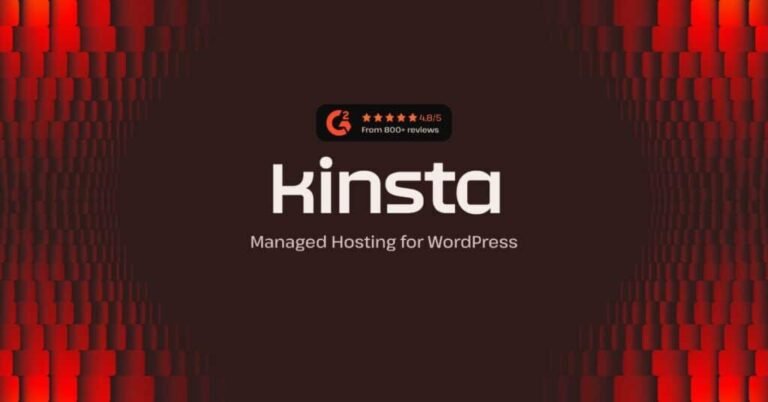When building a WordPress website, two popular page builders often come up: Gutenberg and Elementor. This article will explore the pros and cons of each, helping you decide which is best for your needs. Whether you’re new to WordPress or an experienced user, understanding the differences and capabilities of these tools can significantly enhance your site-building experience.
What is a page builder?
A page builder is a tool that allows you to create and design web pages without needing to write code. Page builders provide a user-friendly interface with drag-and-drop functionality, making it easy to create professional-looking pages quickly. They are beneficial for those who want to build custom pages and layouts beyond what the default WordPress editor offers.
Page builders like Gutenberg and Elementor have become essential tools for WordPress users. They allow you to easily create complex page layouts, integrate multimedia, and customize your site’s appearance. Understanding their functionalities can help you choose the right one for your needs.
Gutenberg vs. Elementor: An Overview
Gutenberg is the default WordPress page builder introduced in WordPress 5.0. It uses a block-based system to create content. Each element, like a paragraph, image, or video, is a block that can be moved around the page.
Elementor, on the other hand, is a third-party page builder plugin that offers advanced design capabilities. It provides a more visual and intuitive drag-and-drop editor compared to Gutenberg.
Both have their strengths and weaknesses, and the choice between them depends on your specific needs and preferences.
How the Gutenberg Editor Works

The Gutenberg editor, also known as the Gutenberg block editor, is designed to simplify the content creation process. Each piece of content you add is a block, which can be individually customized and rearranged.
Gutenberg offers a variety of blocks, including text, images, galleries, embeds, and widgets. It is integrated into the WordPress core, which means it works seamlessly with most WordPress themes and plugins.
One of the key advantages of Gutenberg is its simplicity and integration. Since Gutenberg is the default WordPress editor, it is automatically included with every WordPress installation, and you don’t need to install an additional plugin to use it.
Exploring the Features of Elementor

Elementor is a powerful page builder plugin that provides extensive customization options. It includes a drag-and-drop editor, allowing you to design your pages visually without any coding knowledge.
Some key features of Elementor include:
- Widgets and Templates: Elementor offers a wide range of widgets and pre-designed templates to help you build pages quickly.
- Responsive Design: Elementor’s design features ensure that your pages look great on all devices.
- Theme Builder: Elementor Pro includes a theme builder that lets you design your entire site, including headers, footers, and other theme parts.
- Advanced Design Options: Elementor gives you more control over styling and layout compared to Gutenberg.
Elementor is available in both free and pro versions, with the pro version offering additional features and capabilities.
Differences between Gutenberg and Elementor
When comparing Gutenberg vs. Elementor, several differences stand out:
- User Interface: Gutenberg uses a block-based system that is integrated into the WordPress editor, while Elementor offers a separate, more visual drag-and-drop interface.
- Customization Options: Elementor provides more advanced design and customization options compared to Gutenberg.
- Learning Curve: Gutenberg is generally easier for beginners, whereas Elementor may require more time to learn due to its extensive features.
- Performance: Gutenberg, being built into WordPress, typically has better performance and page speed compared to Elementor, which can be heavier and slower.
Each tool has its strengths, and the best choice depends on your specific needs and preferences.
How to Use Elementor Effectively
Using Elementor effectively involves understanding its interface and features. Here are some tips:
- Start with a Template: Elementor offers many pre-designed templates that you can customize to fit your needs.
- Use Widgets: Take advantage of the various widgets available in Elementor to add different types of content and functionality to your pages.
- Responsive Design: Ensure your designs are responsive by checking how they look on different devices using Elementor’s responsive mode.
- Experiment with Design: Don’t be afraid to experiment with different design options to find what works best for your site.
Elementor’s intuitive drag-and-drop interface makes it easy to create professional-looking pages quickly.
How to Use Gutenberg Effectively
Gutenberg is designed to be simple and user-friendly. Here are some tips for using Gutenberg effectively:
- Familiarize Yourself with Blocks: Understand the different types of blocks available and how to use them.
- Use Patterns: Gutenberg offers block patterns, which are pre-designed block layouts that you can use to speed up your design process.
- Customize Blocks: Each block can be customized in terms of content and styling. Experiment with these options to get the best results.
- Integrate with Plugins: Gutenberg works well with many WordPress plugins, allowing you to extend its functionality as needed.
Using Gutenberg effectively means taking advantage of its block-based system to create structured and well-organized content.
Page Speed: Gutenberg vs. Elementor

Page speed is a crucial factor for any website. A fast-loading site improves the user experience and SEO.
- Gutenberg: Generally, Gutenberg is faster because it is built into the WordPress core and doesn’t require additional plugins. Its lightweight nature means it has less impact on page speed.
- Elementor: While Elementor offers more features, it can also be heavier, which may affect page speed. However, by optimizing your Elementor designs and using performance-focused plugins, you can mitigate these effects.
When considering page speed, Gutenberg has a slight advantage due to its integration with WordPress.
Gutenberg and Elementor Integration

While Gutenberg and Elementor are often seen as competitors, they can be used together. Some users prefer to use Gutenberg for blog posts and simple pages while using Elementor for more complex layouts and designs.
Integrating both tools can offer the best of both worlds, allowing you to leverage the simplicity of Gutenberg and the advanced features of Elementor.
To integrate them:
- Use Gutenberg for Simple Pages: Use Gutenberg’s block editor for straightforward content.
- Switch to Elementor for Complex Designs: When you need more advanced design options, switch to Elementor.
This approach allows you to take advantage of the strengths of both tools.
Which is better for your WordPress theme?
Choosing between Gutenberg and Elementor also depends on your WordPress theme.
- Gutenberg: It works well with most WordPress themes and is built into the WordPress core. If your theme is designed to be compatible with Gutenberg, it can be a seamless experience.
- Elementor: Provides more control over your theme’s design. Elementor’s theme builder allows you to create custom headers, footers, and other theme parts.
Consider your theme’s compatibility and design needs when choosing between Gutenberg and Elementor.
Summary
In conclusion, Gutenberg and Elementor are powerful tools for building and customizing your WordPress website. Here are the key points to remember:
- Page Builder: Gutenberg and Elementor are page builders allowing you to create and design web pages without coding.
- Gutenberg: The default WordPress editor, simple and integrated, is ideal for basic page building and content creation.
- Elementor: A third-party plugin with advanced design capabilities, ideal for complex and visually rich pages.
- Differences: Gutenberg is easier for beginners and better for page speed, while Elementor offers more customization and design options.
- Integration: You can use both Gutenberg and Elementor together for different types of pages.
- Theme Compatibility: Choose the tool that best fits your theme and design needs.
By understanding the strengths and limitations of each, you can make an informed decision and create a WordPress site that meets your goals and expectations.









